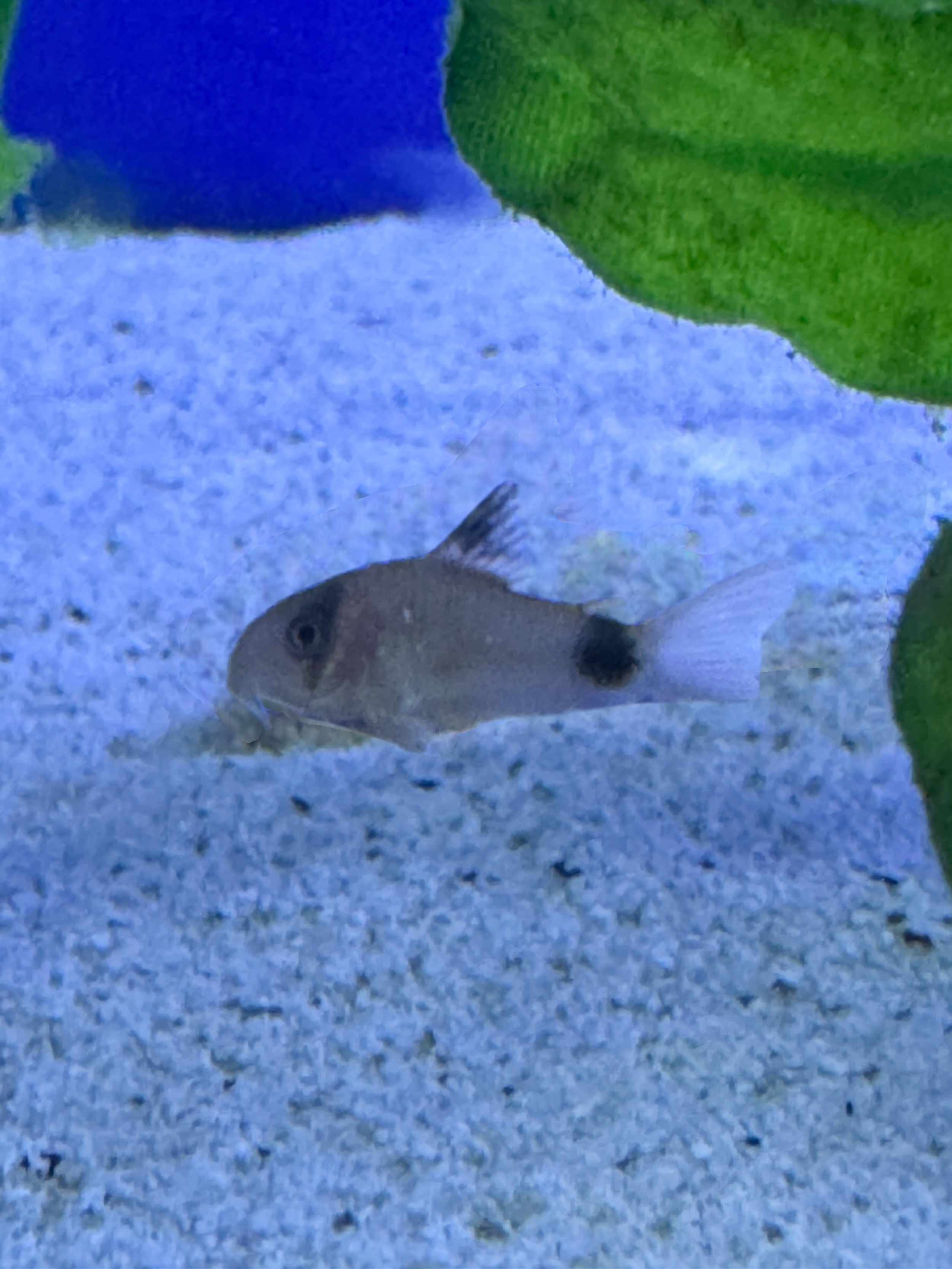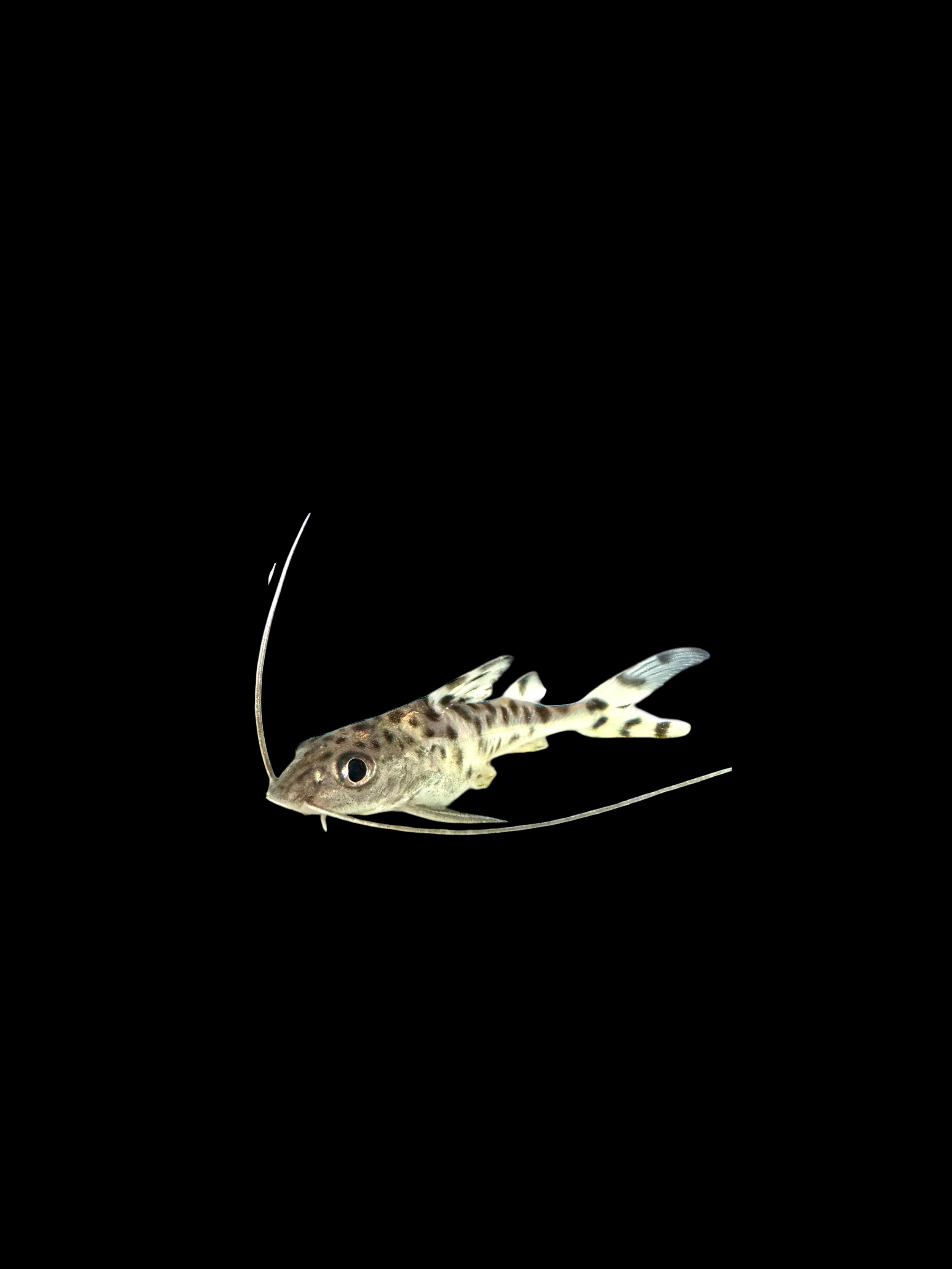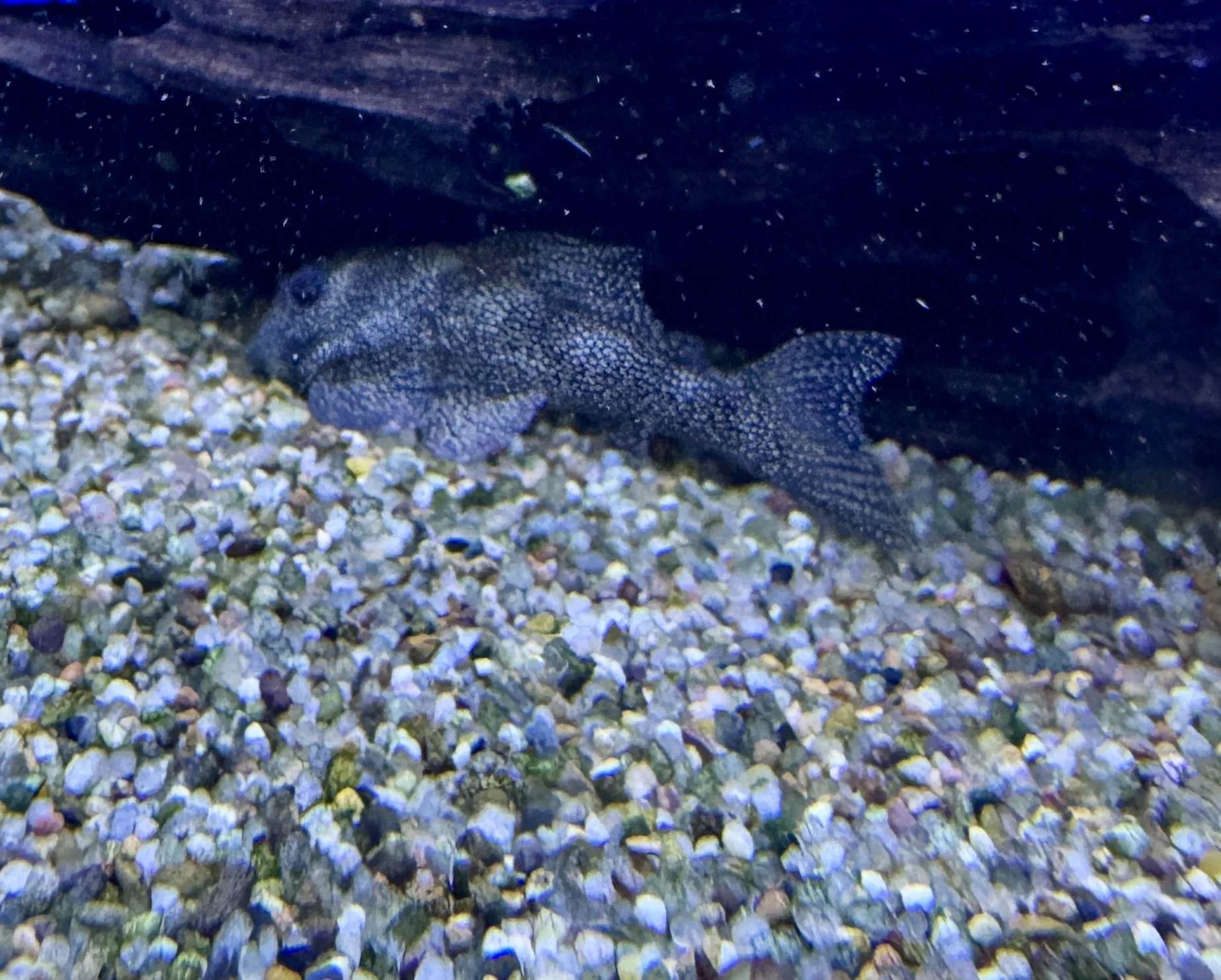The Leucistic Synodontis Petricola, often referred to as the Leucistic Squeaker Catfish or Leucistic Petricola Catfish, is a unique and visually striking variety of the Synodontis petricola species. Leucism is a genetic condition that results in a partial loss of pigmentation, giving these catfish a predominantly white or pale appearance. This makes them stand out in any aquarium, adding a touch of elegance and mystery to your aquatic environment.
These catfish are known for their distinctive appearance, which includes a broad, flat head, large eyes, and a robust, cylindrical body. They are also characterized by their long, whisker-like barbels, which they use to navigate and search for food in the substrate. The leucistic variety retains the unique body shape and fin structure of the wild type but with a striking white coloration.
Leucistic Synodontis Petricola are generally peaceful and can be kept in community tanks with other non-aggressive fish. However, they can be territorial with other bottom-dwelling species, so it's important to provide plenty of hiding spots and territories to minimize conflict. They are nocturnal and prefer a tank with dim lighting and plenty of cover, such as caves, driftwood, and dense plantings. This setup not only helps them feel secure but also mimics their natural habitat in the Congo River basin.
In terms of diet, these catfish are omnivorous and will eat a variety of foods. They are particularly fond of algae and plant matter, so including some live plants in the tank can be beneficial. Commercial catfish pellets and algae wafers should form the basis of their diet, supplemented with live or frozen foods like bloodworms and brine shrimp to ensure they receive a balanced and nutritious diet.
Breeding Leucistic Synodontis Petricola is relatively rare in home aquariums, but it can be achieved under optimal conditions. They are egg layers and will typically spawn in caves or other secluded areas. The male will guard the eggs until they hatch, which usually takes about 3-5 days. The fry are free-swimming a few days after hatching and can be fed on a diet of infusoria and finely crushed flakes.
Overall, the Leucistic Synodontis Petricola is a fascinating and low-maintenance addition to any freshwater aquarium. Their unique appearance and peaceful nature make them a valuable and enjoyable part of a well-planned community tank. Just be sure to provide them with a suitable environment and a varied diet to keep them healthy and happy.
The Leucistic Synodontis Petricola, often referred to as the Leucistic Squeaker Catfish or Leucistic Petricola Catfish, is a unique and visually striking variety of the Synodontis petricola species. Leucism is a genetic condition that results in a partial loss of pigmentation, giving these catfish a predominantly white or pale appearance. This makes them stand out in any aquarium, adding a touch of elegance and mystery to your aquatic environment.
These catfish are known for their distinctive appearance, which includes a broad, flat head, large eyes, and a robust, cylindrical body. They are also characterized by their long, whisker-like barbels, which they use to navigate and search for food in the substrate. The leucistic variety retains the unique body shape and fin structure of the wild type but with a striking white coloration.
Leucistic Synodontis Petricola are generally peaceful and can be kept in community tanks with other non-aggressive fish. However, they can be territorial with other bottom-dwelling species, so it's important to provide plenty of hiding spots and territories to minimize conflict. They are nocturnal and prefer a tank with dim lighting and plenty of cover, such as caves, driftwood, and dense plantings. This setup not only helps them feel secure but also mimics their natural habitat in the Congo River basin.
In terms of diet, these catfish are omnivorous and will eat a variety of foods. They are particularly fond of algae and plant matter, so including some live plants in the tank can be beneficial. Commercial catfish pellets and algae wafers should form the basis of their diet, supplemented with live or frozen foods like bloodworms and brine shrimp to ensure they receive a balanced and nutritious diet.
Breeding Leucistic Synodontis Petricola is relatively rare in home aquariums, but it can be achieved under optimal conditions. They are egg layers and will typically spawn in caves or other secluded areas. The male will guard the eggs until they hatch, which usually takes about 3-5 days. The fry are free-swimming a few days after hatching and can be fed on a diet of infusoria and finely crushed flakes.
Overall, the Leucistic Synodontis Petricola is a fascinating and low-maintenance addition to any freshwater aquarium. Their unique appearance and peaceful nature make them a valuable and enjoyable part of a well-planned community tank. Just be sure to provide them with a suitable environment and a varied diet to keep them healthy and happy.







